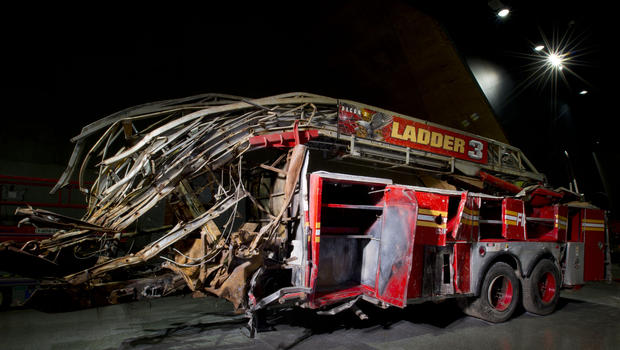9/11 museum designed to evoke memories without causing fresh pain
NEW YORK - The National September 11 Memorial & Museum officially opens to the public Wednesday, but Charles G. Wolf saw the inside days ago.
Wolf lost his wife, Katherine, in the World Trade Center attack and he and other family members were among the first to visit the museum, which sits seven stories underground, below where the Twin Towers once stood.
"It's just amazing what you see down there," Wolf said after his visit. "Absolutely amazing."
Not all who go to the museum will share Wolf's feelings.
To plan for the varied reactions of visitors, the lead exhibit design team for the museum, Thinc Design, hired clinical psychologist Billie Pivnick in late 2006.
"We focused on how to create something that would honor the lives of people," Pivnick said, "but also be a safe place where people could experience their emotions."
- Visit to 9/11 museum may be cathartic for some, traumatic for others
- "We now have a museum that tells our story"
- Obama honors victims at 9/11 museum ceremony
She added that visitors would also feel and recognize the emotions of those around them.
"It's the ethical obligation of memorialization," she said.
The museum's design allows visitors to choose a path that matches their comfort level, according to Pivnick, who met weekly with the designers.
"People who were very directly involved and touched by 9/11 may choose, for instance, to do the memorial exhibit but not do the historical exhibit," she said.
The memorial exhibit - Pivnick's focus - is a gallery of portraits of the thousands of victims of the attack. Visitors can scroll through other photos and information about each of the victims on touchscreens and listen to recordings by relatives and friends who remember them.
The historical exhibit recalls the events of Sept. 11, 2001, when terrorists flew three hijacked airliners into the World Trade Center and the Pentagon. A fourth plane crashed into a field in Pennsylvania when passengers fought back against the hijackers. Nearly 3,000 people were killed in the attacks.
A firetruck that was destroyed at Ground Zero is on display, along with personal items that belonged to those who lost their lives, including a pair of bloody shoes, photographs of people jumping from the towers and recordings of phone calls made by the victims.
Pivnick says these artifacts can bring back to life visitors' individual experiences of 9/11.
"It's only when something is kind of alive for you that ironically you can mourn it and make it more absent," she said. "The idea is to create more a presence so that it can be mourned."
The museum's design takes into account that it will be a place of mourning.
"The thing that's most healing when someone has been traumatized or deeply distressed is what we call being witnessed, having somebody who cares to listen, who cares about their story and what they went through," Pivnick said. "It's the caring that really matters."
Should visitors become uncomfortable with the exhibits, Pivnick says the designers placed exits throughout the building. Tissue boxes are also purposefully placed along the visitor path.
One exhibit, a long steel column from the South Tower, is accompanied by touchscreens where visitors can write their thoughts. Their comments are then projected onto the wall in front of the steel column.
To Pivnick, the piece presents an important part of the museum experience, because it allows visitors - those who find comfort inside the museum and those who find grief - to readjust to the present.
"It's a chance for people to experience that they're all part of the story of this event," she said. "Even though they may all have different perspectives, when you add all those perspectives together they make a collective memory."

